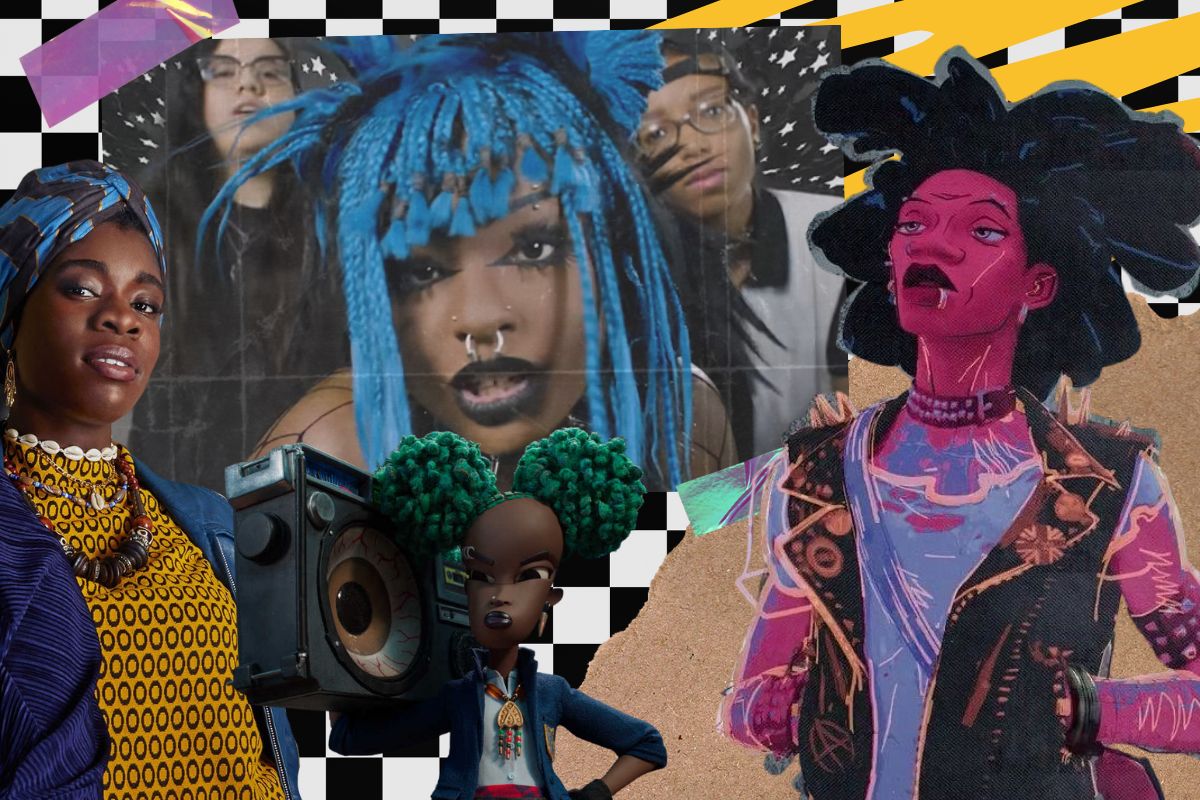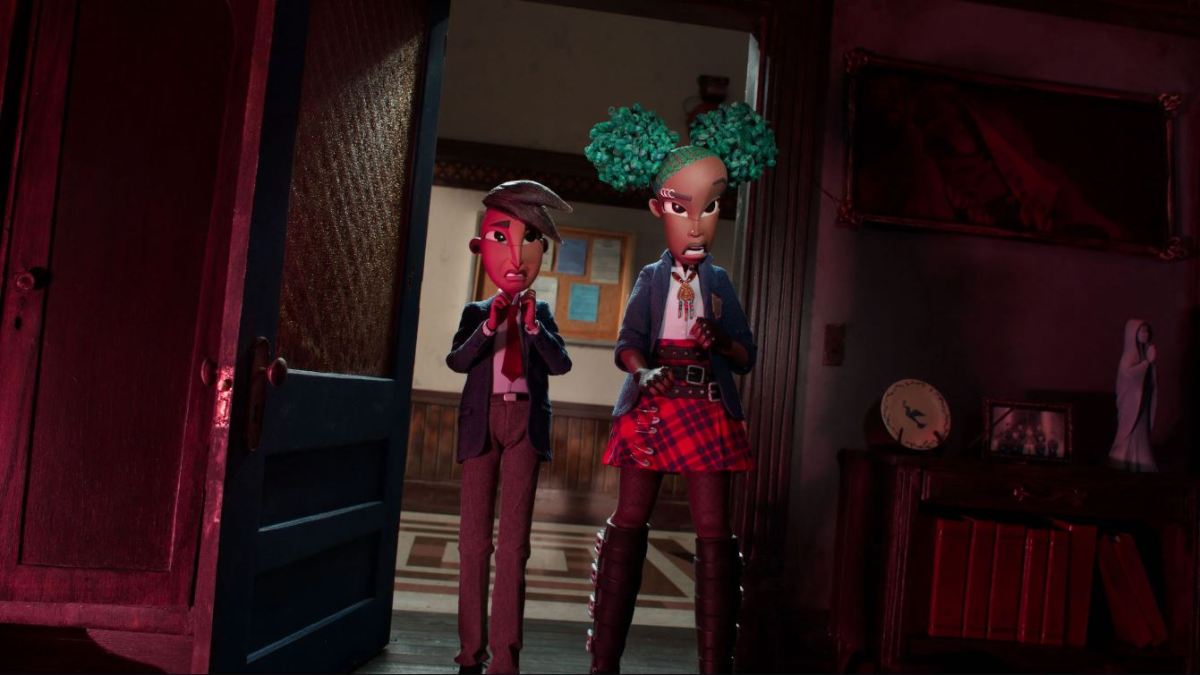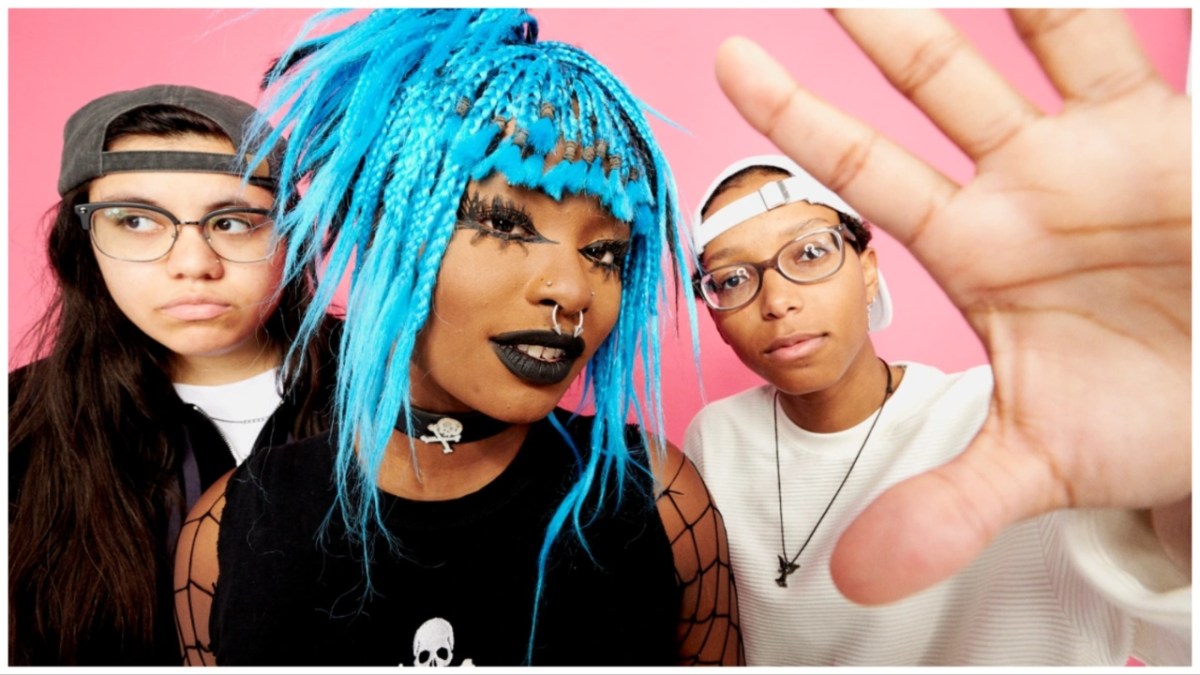Black Punk Is Definitely Having a Moment

For the past few years, there’s been an increased visibility of Black punk artists and characters in media. When I say ‘punk,’ I include emo, alt-rock, metal, and anything in that realm musically, aesthetically, and politically. Hobie Brown (a.k.a. Spider-Punk) from Spider-Man: Across The Spider-Verse is obviously the most high-profile Black punk in ages. However, he is just the latest in a trend of alternative representations of Blackness, and I’m living for it.
Last fall, Henry Selick and Jordan Peele introduced us to Kat Elliot (played by Lyric Ross) in the Netflix animated film Wendell & Wild. Most depictions of punks in narrative media portray them as the black sheep in a traditional family. However, Kat’s rebellion stems from the trauma of losing her parents at a young age. Ferried between homes and juvenile detention centers, Kat uses clothes and music as her primary forms of expression. The latter especially ties her to her previous life with her parents, who instilled a love of music when she was young.

While she’s the only Black punk, she’s not the only alt-kid of color in the movie. She begins a friendship with the only other emo kid at the all-girls Catholic school, Raúl Cocolotl (Sam Zelaya). Before Kat arrived, he was alone, making art inspired by his own Indigenous and Latine heritage. Raúl appears bothered when surrounded by people that knew him before he transitioned. That is, until his journey with Kat. The surge in Black (and brown) punk doesn’t stop at attire and attitude.
Face the music

In 2020, Fueled By Ramen signed one of my new favorite bands, Meet Me @ The Altar (MM@TA). After forming online in 2015, Ada Juarez, Edith Victoria, and Téa Campbell created music remotely. The pop-punk band toured for the first time in 2018. After their Paramore cover went viral, MM@TA blew up. New fans widely shared their self-released EPs. In an interview for Them, Journalist Juan Velasquez described the trio as equally starstruck while meeting their fans of color and talking about their Y2K musical inspirations. And MM@TA isn’t alone. There are many up-and-coming Black artists experimenting in similar genres (like nu-punk and ska). People like Pinkshift, Willow, De’Wayne, Cherie Amour, Skatune Network, and Magnolia Park. Half of which, like many other fans, I found via TikTok.

TV-wise, Channel 4 and Peacock introduced us to Bisma (Faith Omole) in We Are Lady Parts. Bisma is the bassist and mother of the all-Muslim, all-women titular punk band. This moniker is both literal (because she has a child) and figurative, as she tries to mediate band conflicts. Bisma is also the only character making money through art as she’s selling her comic book The Killing Period [Apocalypse Vag]. I don’t think she could get any cooler, seriously.
Finally, we have Hobie (voiced by Daniel Kaluuya). Inspired by the DIY grind of independent musicianship, the animation of Hobie’s character and world imitates zines. So far, we haven’t learned much about Hobie except that he’s an anarchist and a sweetheart. We’ll likely learn more about him in the upcoming Spider-Man: Beyond the Spider-Verse film. His introduction marks the first Black punk boy onscreen, probably since Netflix’s Dope (2015)—a movie starring Kaluuya’s Spider-Man co-star Shameik Moore.
It’s always been
The rapid succession in which we see these characters is noteworthy because punk characters rarely get represented in media, period. And when they are, they’re often white. I think I’ve seen way more Nazi skinheads (not all skinheads are Nazis) than Black punks. Entertainment at large (and alternative movements) portrays punks as a type of whiteness (and not something color-neutral) that lots of white kids enjoy. Every single one of the creative projects I featured didn’t tokenize the Black punk figure. Every single one was POC-driven, and most featured more than one Black character/person.

While growing up in a majority Mexican American community, colorism designated the “authenticity” of who got to be associated with alternativeness. When we tried (to varying degrees) to replicate the styles of Alternative Press, the (racially) white kids were told they looked the part. It didn’t hurt that their hair stayed straight after dancing and performing for extended periods.
At least once or twice a year, I reflect on how my childhood might be different if I knew that Blackness is integral (and oftentimes foundational) to the music regarded as “white people’s music.” This includes my favorite bands—like Fall Out Boy—from when I began to develop a musical taste different enough from my parent to be considered “Alyssa’s music.” Not only is the lead writer (Pete Wentz) biracial too, but the band drew heavily from Black acts outside of rock like gospel and pop. I don’t think I would’ve necessarily been a different person if I knew about Afro-Punk and its predecessor Sista Grrrl. But I would have maybe had a comeback to those naysayers of every color.
Black influence is everywhere

“I’m not saying Black people created punk rock, I’m saying we are punk rock without even trying. […] When you’re Black, you are punk rock all the time. You’re a target all the time, and I can’t change the color of my skin.”
Sacha Jenkins of The 1865
Even outside of anything resembling a subgenre of rock, Black artists have continually taken inspiration from Black punk. These artists include mainstream stars and alternative musicians like Rico Nasty and Hemlocke Springs. There are also non-Black punk artists with heavy Black influences (an example being Paramore). Even anti-Black dipshits like Brendon Urie of Panic! At The Disco (who I used to be a big fan of) sonically pull from Black artists.
Similar hidden histories and patterns can be found among Latine artists. This goes beyond the few individual badasses like Zack de la Rocha and Tom Morello. (I know both members of Rage Against the Machine have Black heritage, with Morello being Black himself.) Also, beyond a single band— like Las Hijas de Violencia.
If you want to learn more about Black punk beyond these characters and MM@TA, I wholly recommend AJ+’s short segment The Very Black History Of Punk Music. Additionally, video essayist Lil Bill’s Punk Has ALWAYS Been Black AF serves as an excellent history lesson with dry humor and personal stories.
(featured image: Fueled By Ramen, Netflix, Channel 4, Sony Pictures Animation remixed by Alyssa Shotwell.)
Have a tip we should know? [email protected]
